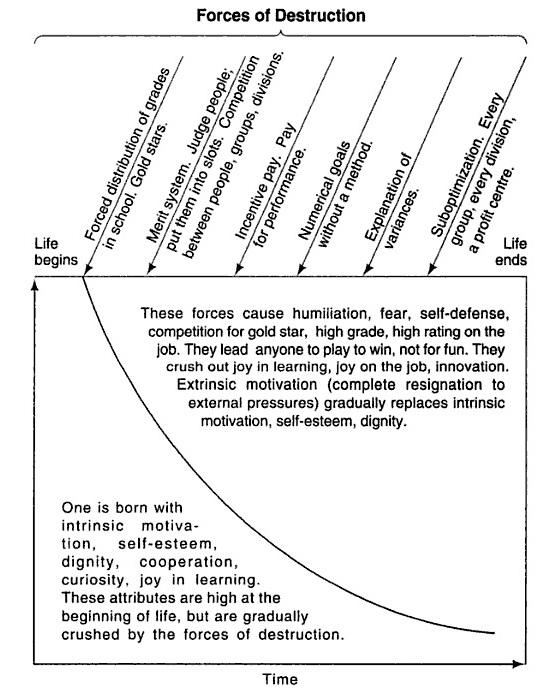If we mention change, what are the words that spring to mind? Improvement, Worry, Fear, Concern, Waste, Challenge, Opportunity, Re-birth?
Fear (or at least ‘worry’) is, I suspect, a common response and is certainly a term often mentioned by commentators on organisational change as being an issue to handle with care. ‘Resistance’ is another common term which in some cases may be fear disguised as bravado (although remember that resistance may also be a source of strongly held, and potentially helpful, alternative views – see: Resistance is useful: a new assumption?).
This begs a question – is fear the dominant emotion of a changing work environment?
The answer for any organisation lies in the culture (norms, behaviours, values, rules, conversations) that is promoted (largely by leaders). Is change a difficulty, a problem, a challenge, an opportunity or something that you are just going to have to put up with? What are the messages, stories and perspectives that we demonstrate, repeat, encourage and expect? Is it possible to eliminate a sense of fear by the way we explore and discuss the issues of change?
Of course our views and behaviour are only part of the wider picture. There is also the fear of stepping out and being different, or of ‘raising your head above the parapet’ by doing things differently (with the implication that your head is likely to get shot off!).
It is also not unusual to stumble across incidences of fear being applied (by ‘management’) as a tool to get people to do things. This might be apparent in the way in which meetings are constructed, how conversations are initiated by leaders, in the ways that objectives are set, in responses to feedback, ideas or proposals. When established behaviours contrast with the stated expectations (for innovation, improvement, sharing or other working values), we need to be ready to challenge the old orthodoxy.
Every manager needs to understand, as Frederick Herzberg noted in his landmark 1968 Harvard Business Review article, if you kick a dog it may move (out of fear) but is NOT motivated. Fear causes a fight/flight response in people, which focuses on generating action to avoid the cause of the fear and not on producing better work or doing things more effectively (Aguayo, 1990). The fight/flight response driven by people who use fear often causes hiding, running or cheating and none of these things lead to positive change which is what the organisation really needs. Sometimes leaders need reminding of this again and again; Herzberg’s 44-year-old article has been re-issued at least five times (most recently in 2008) and still remains relevant; people are motivated from within – they themselves must want the change and it is these motivations which will make things happen.

Aguayo R. 1990, Dr Deming: The American who taught the Japanese About Quality, Mercury, London.
Herzberg, F. 1968, “One more time: how do you motivate employees?”, Harvard Business Review, vol. 46, iss. 1, pp. 53–62
Seddon, J. (2005) Freedom from Command and Control, Vanguard Press, Buckingham, UK.
 Herzberg’s famous article ‘One more time: how do you motivate employees?’ has been reprinted by the Harvard Business Review at least five times since the 1968 original. Presumably this is, as suggested by John Seddon, because people continue not to get the message.
Herzberg’s famous article ‘One more time: how do you motivate employees?’ has been reprinted by the Harvard Business Review at least five times since the 1968 original. Presumably this is, as suggested by John Seddon, because people continue not to get the message.




